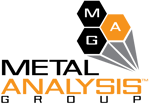EXPERT-APPROVED: XRF CONSUMER GOODS
Expert-Approved XRF Analyzers for Lead Paint from Metal Analysis Group
Government regulations, exemplified by the U.S. EPA-issued Renovation, Repair, and Painting (RRP) Rule, have heightened awareness regarding the hazards of lead paint, prompting the need for thorough lead paint testing. Lead exposure poses significant health risks to both children and adults, including issues such as high blood pressure, dementia, and other neurological disorders. Professionals involved in demolition, renovation, or repair projects, as well as those working with Resource Conservation and Recovery Act (RCRA) metals, are particularly susceptible to inhaling lead-contaminated dust.
Metal Analysis Group approved XRF analyzers have emerged as the industry standard for lead paint testing, meeting the rigorous demands of regulatory compliance. These analyzers are supported by an ideal Performance Characteristic Sheet (PCS) and address the safe work practices mandated in commercial and industrial settings. Notably, they deliver accurate readings without inconclusive results, substrate correction, or false positives/negatives, making them the preferred choice of regulatory agencies like the U.S. EPA.
Lead paint inspection is critical due to the toxic nature of lead, which affects the central nervous system and can lead to severe health issues upon exposure. Although lead paint was banned in the United States in 1978, traces may still be found in older structures, including road paints. Efforts are underway to phase out these hazardous paints and replace them with safer alternatives to protect human health.
Lead becomes extremely hazardous when it transforms into dust, typically occurring during activities like sanding or chipping paint during renovation or demolition work. Even low levels of lead exposure can have detrimental effects on children's learning, attention, and behavior, while in adults, it may lead to conditions like dementia.
When planning redecoration or renovation projects in older buildings, it's imperative to test for lead paint residues to ensure safety. Handheld XRF instruments provide a quick and efficient means of analyzing samples for lead content, enabling informed decisions regarding the need for specialized equipment or safety measures during future renovation work.
In essence, the adoption of XRF lead paint testing plays a crucial role in safeguarding public health, ensuring compliance with regulatory standards, and mitigating the risks associated with lead exposure in residential and industrial environments.
